As a performance consultant working with athletes for over two decades, I've seen firsthand how tennis transforms lives. It's a sport that combines physical prowess with mental fortitude in a beautiful dance of skill and determination. Whether you're picking up a racquet for the first time or looking to deepen your understanding of this magnificent sport, you'll agree with me that there is something magical about stepping onto a tennis court. The crisp sound of a ball meeting the strings, the rhythm of a rally, and the thrill of outsmarting an opponent—it’s a sport that hooks you from the first swing.
Tennis has captivated millions worldwide, from casual weekend players to professional athletes competing on the grandest stages. What makes tennis so special is its accessibility—it can be played by people of all ages and skill levels, making it truly a sport for life. Throughout my career working with tennis players from beginners to elite competitors, I've witnessed how this sport builds character, improves fitness, and creates lasting connections. Whether you’re a complete beginner or someone looking to deepen your love for the game, tennis offers a world of excitement, fitness, and mental challenge.
In this comprehensive guide, I'll help you explore the rich history of tennis, understand the court and its variations, learn the fundamental rules, discover how to get started, develop essential mental skills, and draw inspiration from the legends who have shaped the game. By the end, you'll have all the knowledge you need to begin your tennis journey with confidence.
What is Tennis?
Tennis is a racquet sport played either between two individual players (singles) or two teams of two players each (doubles). Players use a strung racquet to hit a hollow rubber ball covered with felt over a net into the opponent's court, with the objective being to manoeuvre the ball in such a way that the opponent cannot return it correctly.
At its core, tennis is a game of strategy, skill, endurance, and mental fortitude. Each match is a unique narrative, with momentum shifts, tactical adjustments, and moments of breathtaking athleticism. It's accessible enough for beginners to enjoy from their first session, yet possesses enough depth and nuance to challenge players throughout a lifetime of participation.
As someone who has worked extensively with tennis players on performance psychology, I can tell you that tennis is much more than just hitting a ball back and forth. It's a complex interplay of physical conditioning, technical skill, tactical awareness, and mental resilience. The sport demands quick reflexes, excellent hand-eye coordination, endurance, and the ability to make split-second decisions under pressure.
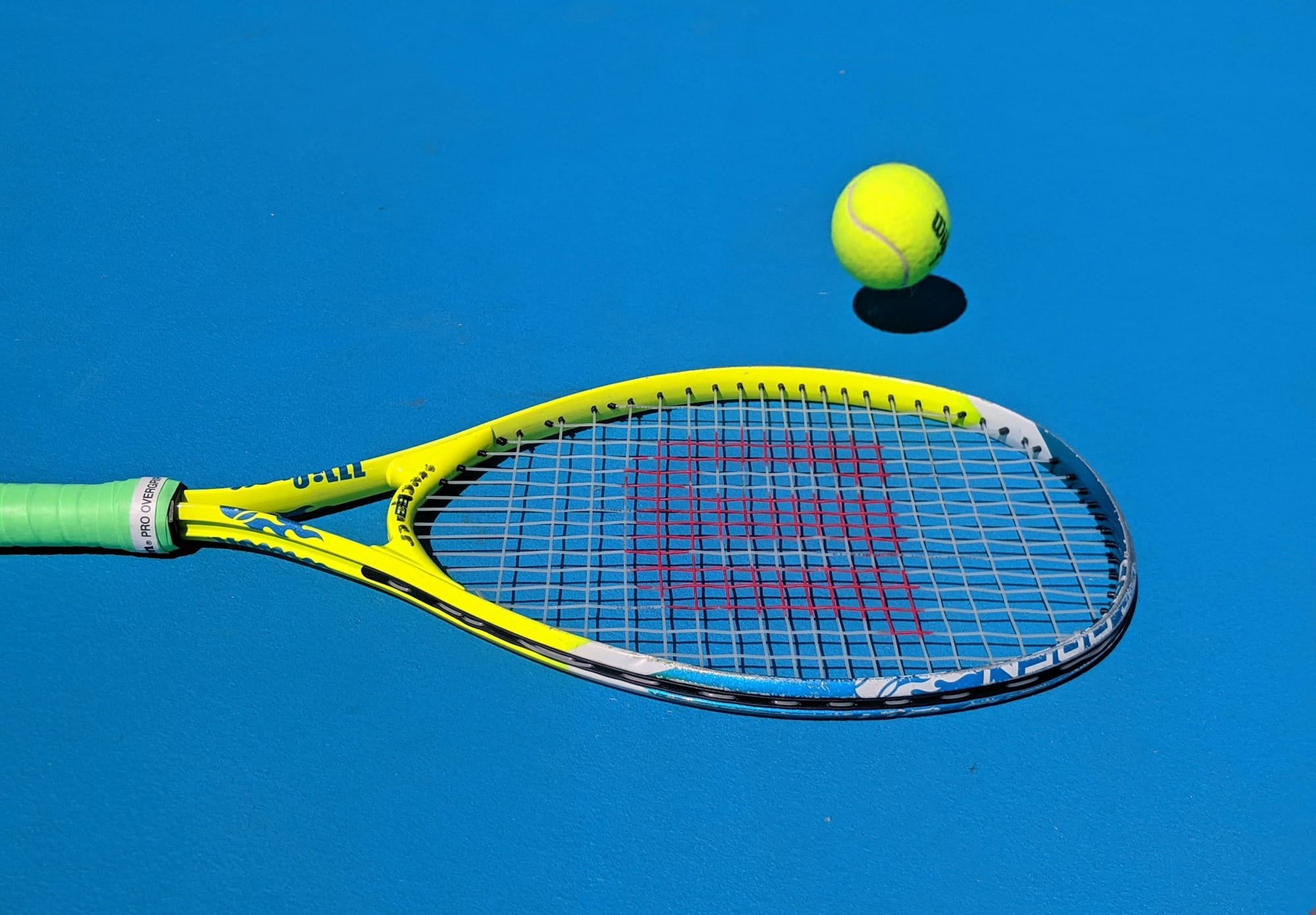
The Evolution of Lawn Tennis
Tennis as we know it today emerged from a long lineage of racquet sports. The game's modern incarnation, commonly referred to as "lawn tennis," was formalized in Victorian England during the 1870s, but its roots stretch back much further.
The earliest forms of tennis date back to 12th century France, where monks played a handball game called "jeu de paume" (game of the palm) in monastery courtyards. Over centuries, this evolved into "real tennis" or "royal tennis", played with wooden racquets in enclosed courts, often under the patronage of European nobility.
The pivotal moment in tennis history came in 1873 when Major Walter Clopton Wingfield patented "Sphairistikè" (Greek for "ball game"), a portable court and equipment set that could be played outdoors on grass. This innovation democratized what had been an elite indoor sport, making it accessible to the Victorian middle class.
The All England Croquet Club (later to become the All England Lawn Tennis and Croquet Club) adopted a modified version of Wingfield's rules in 1875, and two years later, held the first Wimbledon tournament—marking the birth of tennis as a competitive sport.
Modern Tennis and Its Popularity
Tennis has experienced tremendous growth since the dawn of the Open Era in 1968, when professionals were finally allowed to compete in Grand Slam tournaments alongside amateurs. This watershed moment unified the sport and paved the way for tennis to become the global phenomenon it is today.
The contemporary tennis landscape is a vibrant ecosystem comprising professional tours for men (ATP) and women (WTA), four prestigious Grand Slam tournaments, team competitions like the Davis Cup and Billie Jean King Cup, and countless amateur leagues and recreational players around the world.
What makes tennis particularly appealing is its accessibility across age groups. Unlike many sports that peak in youth, tennis can be played competitively well into one's senior years, with special categories for players of all ages. It's truly a sport for life, offering physical benefits, social connections, and mental challenges regardless of when you start playing.
According to recent statistics, an estimated 87 million people play tennis globally, making it one of the most participated-in individual sports worldwide. Its popularity continues to grow, particularly in regions like Asia and South America, expanding beyond its traditional strongholds in Europe, North America, and Australia.

Major Tournaments in Tennis
The tennis calendar revolves around four Grand Slam tournaments, often referred to as the "Majors". These prestigious events represent the pinnacle of achievement in tennis:
Wimbledon (The Championships): Held since 1877 at the All England Club in London, Wimbledon is the oldest and perhaps most revered tennis tournament. Played on meticulously maintained grass courts, it is famous for its traditions, including the all-white dress code and royal patronage. Winning Wimbledon remains many players' ultimate dream.
US Open: Taking place in New York City at the USTA Billie Jean King National Tennis Center, the US Open is known for its electric atmosphere and night sessions. Played on hard courts, it typically features fast-paced matches and enthusiastic American crowds.
Australian Open: The first Grand Slam of the calendar year, played in January in Melbourne. This tournament is known for potentially extreme heat and the uniquely paced Plexicushion hard courts. It's often referred to as the "Happy Slam" due to its player-friendly atmosphere.
French Open (Roland Garros): Held in Paris on distinctive red clay courts, Roland Garros presents a unique challenge that has historically favoured players raised on European clay. The slow surface produces longer rallies and often requires different tactical approaches compared to other majors.
Beyond the Grand Slams, the tennis calendar includes ATP Masters 1000 events and WTA 1000 tournaments, year-end championships (ATP Finals and WTA Finals), and Olympic tennis competition every four years. These events, along with hundreds of smaller tournaments, create a nearly year-round competitive schedule for professional tennis players.
Key Figures in Tennis History
Tennis has been shaped by extraordinary talents whose impact transcended the sport itself. Here are some of the most influential figures who have left an indelible mark on tennis history:
Suzanne Lenglen: The first international female tennis star, Lenglen revolutionized women's tennis in the 1920s with her flamboyant style and athletic play. The French champion broke conventions by wearing shorter skirts and displaying emotion on court.
Rod Laver: The only player to complete the calendar Grand Slam (winning all four majors in a single year) twice—first as an amateur in 1962 and then as a professional in 1969. "The Rocket" epitomized consistency and sportsmanship.
Billie Jean King: Beyond her 12 Grand Slam singles titles, King is perhaps best known for defeating Bobby Riggs in the famous "Battle of the Sexes" match in 1973 and for founding the Women's Tennis Association. Her advocacy for gender equality transformed women's professional tennis.
Björn Borg and John McEnroe: These fierce rivals of the late 1970s and early 1980s presented a compelling contrast in styles—Borg's icy composure versus McEnroe's volatile temperament—that captivated global audiences and elevated tennis's popularity.
Martina Navratilova and Chris Evert: Another legendary rivalry that defined an era. Navratilova's serve-and-volley aggression against Evert's baseline precision created a fascinating tactical chess match across 80 encounters spanning 16 years.
Steffi Graf: The German champion dominated women's tennis in the late 1980s and 1990s, completing the only "Golden Slam" (all four majors plus Olympic gold) in a single year in 1988.
Pete Sampras and Andre Agassi: American rivals who dominated men's tennis in the 1990s, with Sampras's serve-and-volley brilliance contrasting with Agassi's return-of-serve mastery.
These pioneers laid the groundwork for the modern era dominated by Roger Federer, Rafael Nadal, Novak Djokovic, and Serena Williams—collectively raising the sport to unprecedented heights of athleticism and global popularity.
The Tennis Court: Where the Game Happens
The tennis court is where all the action unfolds—a rectangular canvas where players express their skills, strategies, and competitive spirit. Understanding the court's dimensions and features is fundamental to appreciating the game.
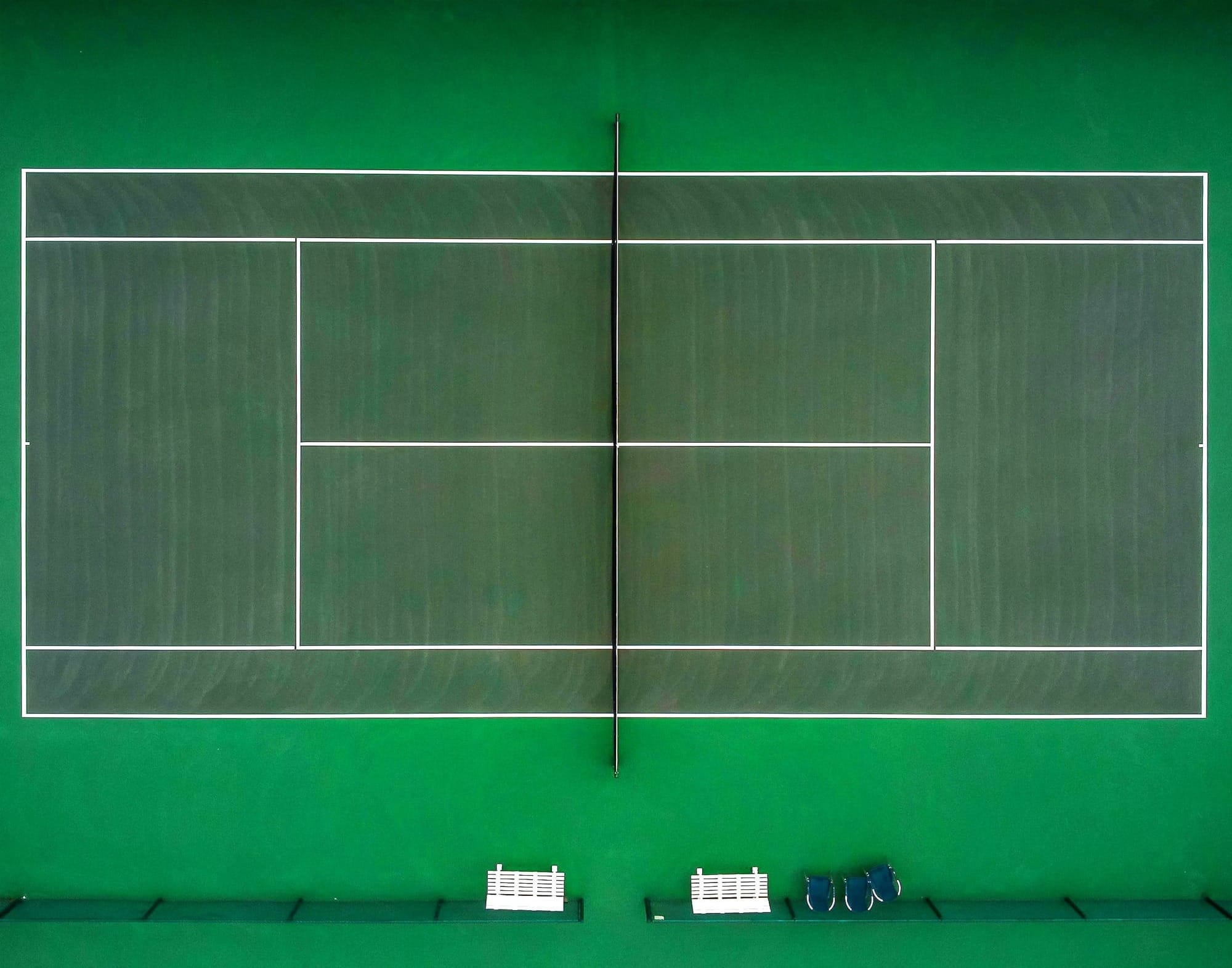
Understanding the Layout of a Tennis Court
A standard tennis court is 78 feet (23.77 metres) long. For singles matches, the court is 27 feet (8.23 metres) wide, while for doubles play, the full width of 36 feet (10.97 metres) is used. This difference accounts for the "tramlines"—the strips on either side that are in-bounds only during doubles play.
The court is divided in half by a net suspended by a cord or metal cable. The net stands 3 feet 6 inches (1.07 metres) high at the posts and 3 feet (0.914 metres) high at the centre. This slight dip in the middle creates subtle variations in shot selection and difficulty.
Each half of the court is further divided into three main areas:
The Service Boxes: These are the two rectangular areas on each side of the net formed by the service line, centre service line, and singles sidelines. When serving, players must land the ball in the service box diagonally opposite to where they're standing.
The Baseline: The back boundary of the court, from which many rallies are conducted in modern tennis. The area between the baseline and service line is sometimes called "no man's land"—a challenging position from which to play effectively.
The Net Area (or Forecourt): The section closest to the net, including the service boxes. This area is where players execute volleys, overheads, and drop shots.
The court also features several important lines:
- The center service line: divides the service area into two equal boxes
- The service line: marks the front boundary of the service boxes
- The center mark: a small line at the center of the baseline indicating the middle of the court
The white lines mark all court boundaries, and these lines are considered part of the court, meaning a ball landing on any line is ruled "in". The precision of line calls is a distinctive aspect of tennis, now aided by electronic review systems at professional tournaments.
In my work with players on court positioning and strategy, I emphasise understanding these dimensions as they directly impact tactical decisions during play.
Different Types of Tennis Courts
Tennis is played on several surfaces, each with distinct characteristics that influence playing style, ball bounce, and movement:
Grass Courts: The original tennis surface, grass provides a fast game with low, skidding bounces that favour serve-and-volley tactics. Grass courts are the most expensive to maintain and are relatively rare today. Wimbledon remains the only Grand Slam played on grass.
Clay Courts: Made from crushed brick, shale, or stone, clay courts produce a slower game with high bounces. They allow players to slide into shots and generally favour those with strong defensive skills and heavy topspin. The French Open is played on the distinctive red clay of Roland Garros.
Hard Courts: Constructed from concrete or asphalt with an acrylic surface layer, hard courts offer a middle ground in terms of speed and bounce consistency. They're durable and low-maintenance, making them the most common surface worldwide. The US Open and Australian Open are both played on hard courts, though with slightly different compositions affecting play characteristics.
Carpet/Indoor Courts: These synthetic surfaces are typically used for indoor tennis. Though less common at the professional level today, various indoor surfaces have been used historically, from wood to synthetic materials.
Each surface rewards different skills and tactics, which is why versatility across surfaces is considered a hallmark of truly great players.
How Court Conditions Affect Play
Throughout my career working with tennis players, I've observed how court conditions significantly influence playing styles and strategies. Understanding these effects is crucial for adapting your game effectively. Beyond the surface type, several factors influence how a court plays and the strategies that prove most effective:
Weather and Climate: Temperature dramatically affects ball behaviour—warmer conditions make the ball bounce higher and move faster through the air. Humidity can make balls heavier and slower. Wind presents another variable, requiring players to adjust their toss on serves and their margin for error during rallies.
Court Speed: Even within the same surface category, courts can vary in speed. For example, some hard courts use more sand in their finish for a slower pace, while others are designed to play faster. Professional tournaments often adjust court speed strategically—some events prefer faster conditions to create more dynamic, aggressive tennis.
Ball Type: Different balls are designed for specific surfaces. Heavy-duty felt balls are used on abrasive hard courts, while regular-duty balls are better suited for softer surfaces like clay and grass. The altitude of the location may also require special high-altitude balls that don't fly too fast in thinner air.
Indoor vs Outdoor: Indoor courts eliminate variables like sun position, wind, and precipitation, creating more predictable playing conditions. Outdoor tennis embraces these natural elements as part of the challenge, requiring players to adapt constantly.
The interplay between court conditions and individual playing styles creates fascinating tactical battles. Clay court specialists with heavy topspin may dominate on slow surfaces but find their effectiveness diminished on lightning-fast grass. Conversely, big servers might breeze through matches on grass but struggle with the extended rallies typical on clay.
Understanding these nuances enhances appreciation for players who can adapt their game to excel across different surfaces—one of tennis's unique challenges compared to many other sports.
Rules of Tennis: Basic Guidelines
Learning the rules of tennis is essential for newcomers to understand the flow and structure of the game. While professional matches may seem complex with their traditions and protocols, the fundamental rules are straightforward.
Overview of Tennis Rules
The basic objective in tennis is simple: hit the ball over the net and within the boundaries of the court in such a way that your opponent cannot return it properly. Here are the core rules that govern play:
Starting a Match: Players conduct a coin toss or spin a racquet to determine who serves first and which ends of the court they'll start on. Players switch ends after the first, third, and every subsequent odd-numbered game.
Serving: The server stands behind the baseline, between the centre mark and sideline. The serve must be hit diagonally across the net into the service box on the opposite side. The server gets two attempts (first and second serve) to place the ball successfully in the correct service box.
Service Sequence: The server alternates between serving from the right (deuce) court to the left (ad) court throughout their service game. After each game is completed, the service passes to the opposing player or team.
Rally Rules: Once a serve is successfully in play, players alternate hitting the ball. The ball may be hit after it bounces once or volleyed before it bounces (except on the return of serve in singles, where volleying is rarely practiced though technically legal).
Out of Bounds: A ball landing outside the court boundaries is "out" and results in a point for the opponent. In singles, the narrower court dimensions apply; in doubles, the wider court including the "tramlines" is used.
Net Interactions: If the ball touches the net during play (other than on a serve) and lands in the correct court, play continues. If a serve hits the net but still lands in the correct service box, it's called a "let" and the server retakes that serve without penalty.
Player Interference: Players may not touch the net, cross onto the opponent's side, or hinder the opponent's ability to play the ball. Doing so results in losing the point.
Rest Periods: Players receive a 90-second changeover when switching ends (after odd-numbered games) and a 120-second break between sets. There is no rest between games within a set except during changeovers.
These foundational rules create the structure within which the tactical complexity of tennis unfolds. As players progress, they'll encounter additional rules regarding time violations, court etiquette, and challenge systems at higher levels of play.
How to Score in a Tennis Match
Tennis scoring has a unique language that can initially seem unusual to newcomers but becomes second nature with familiarity:
Points: Individual points progress as: 0 (called "love"), 15, 30, 40, and then game point. If both players reach 40, the score is called "deuce". From deuce, a player must win two consecutive points to win the game—the first point gives them "advantage", and the second point wins the game.
Games: A player must win a game by at least two points. Games accumulate to form sets, with the server's score always announced first when calling the game score (e.g., "15-30" means the server has 15 and the receiver has 30).
Sets: In most formats, a player needs to win six games to win a set, provided they lead by at least two games (e.g., 6-4). If the set reaches 6-6, a tiebreak is usually played (though some tournaments have exceptions for final sets).
Tiebreaks: The standard tiebreak continues until one player reaches 7 points with at least a 2-point margin. Players serve alternately, starting with one player serving one point, then each player serving two consecutive points thereafter.
Matches: In most recreational and junior tennis, matches are typically best-of-three sets (first player to win two sets). Men's Grand Slam matches have traditionally been best-of-five sets, though many tournaments are shifting toward the best-of-three format for all players.
The scoring system creates interesting strategic dynamics. For instance, a player might be just one point from losing a game, set, or match, but can completely turn things around with a few good points—there's no running out the clock in tennis, which contributes to its dramatic appeal.
Common Fouls and Violations
Understanding what constitutes a violation helps maintain fair play and proper etiquette:
Foot Fault: A server commits a foot fault by stepping on or over the baseline or the imaginary extension of the centre mark or sideline before striking the ball during a serve. This results in a fault (lost serve attempt).
Double Hit/Carry: Players must hit the ball cleanly without carrying, holding, or double-hitting it. These violations result in loss of point.
Time Violations: Players have 25 seconds between points (20 seconds at Grand Slams, though this has been standardised to 25 seconds in recent years). Exceeding this limit can result in a warning and then point penalties.
Racquet Abuse: Deliberately breaking a racquet or hitting the court surface in anger typically results in a code violation, with penalties progressing from warnings to point penalties and eventually game penalties.
Verbal Obscenities/Unsporting Behaviour: Tennis maintains standards of decorum; offensive language or unsporting behaviour toward officials, opponents, or spectators results in code violations with escalating penalties.
Coaching: At most levels of competitive tennis, receiving coaching during a match (except during authorised breaks in certain formats) is prohibited. The WTA Tour now allows limited coaching from designated boxes, while the ATP and Grand Slams have been experimenting with various coaching rules.
Hindrance: Making deliberate noises or movements to distract an opponent during a point is considered hindrance and results in loss of point.
These rules help maintain tennis's reputation as a sport of integrity and sportsmanship. The principle of "fair play" remains central to tennis culture at all levels, from weekend recreational players to Grand Slam champions.
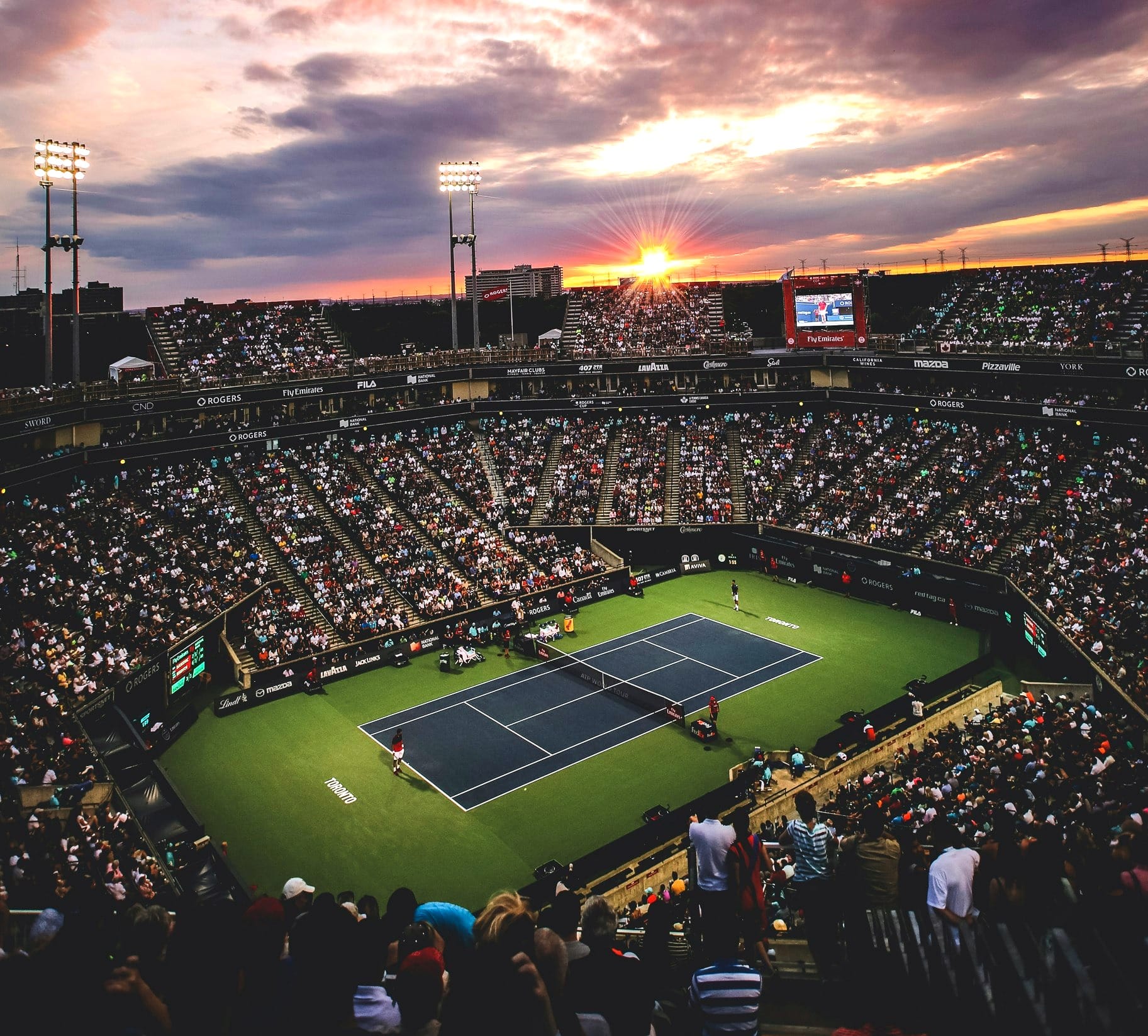
Getting Started: How to Play Tennis
Beginning your tennis journey is an exciting prospect that combines physical challenge with skill development. Even if you've never held a racquet before, with some basic guidance, you can enjoy the sport from your very first session.
Essential Tennis Skills for Beginners
When I work with newcomers to tennis, I encourage them to focus on developing these fundamental skills:
Grip: The foundation of all strokes. The continental grip (holding the racquet as if shaking hands with it) is versatile and allows for various shots. The eastern forehand grip is excellent for beginners learning their groundstrokes.
The Ready Position: This is your home base—standing with knees slightly bent, weight on the balls of your feet, and racquet held in front of you with both hands on the grip. From this athletic stance, you can move quickly in any direction to reach the ball.
Forehand Groundstroke: For right-handed players, this is a stroke hit from the right side of the body, typically with one hand. The forehand motion should feel somewhat natural, like throwing a frisbee. Focus first on making clean contact and keeping the ball in play rather than generating power.
Backhand Groundstroke: Hit from the left side of a right-handed player's body, the backhand can be executed with either one or two hands. Most beginners find the two-handed backhand easier to control initially, though both styles have their advantages.
The Serve: Tennis begins with this overhead stroke, which can be broken down into simple components for beginners: the stance, the toss, and the swing. Start with a simplified motion focused on consistency rather than power, thinking of it almost like throwing the racquet at the ball.
The Volley: This is a punch-like stroke executed before the ball bounces, usually near the net. Volleys require minimal backswing—it's more about positioning the racquet face correctly and using the incoming ball's energy.
Basic Movement Patterns: Tennis requires specific footwork, including the split step (a small hop as your opponent hits the ball), recovery steps back to the centre after hitting, and side-to-side movement patterns. Good footwork is often what separates developing players from beginners.
When practising these skills, remember that consistency trumps power for beginners. Focus on clean contact and keeping the ball in play rather than trying to hit winners. A useful training approach is the "rally ball" concept—hitting at medium pace with good height over the net, which increases the likelihood of extended rallies. Being able to hit the ball back and forth several times builds confidence and provides the foundation for more advanced skills.
Equipment Needed to Start Playing Tennis
You don't need extravagant gear to begin playing tennis, but a few key items will make your introduction to the sport more enjoyable:
Tennis Racquet: For adult beginners, look for a racquet with a larger head size (100-110 square inches), lighter weight (9-10 ounces unstrung), and head-heavy balance for easier power generation. Many manufacturers offer specific "beginner" racquets that provide a good blend of power and feel.
Tennis Shoes: Proper tennis-specific shoes offer lateral support for side-to-side movements and outsoles designed for your court surface. Running shoes typically don't provide adequate support for tennis movements and may wear out quickly on court surfaces.
Tennis Balls: Standard yellow pressurised balls are used in most play, but beginners might benefit from "green dot" or "orange dot" balls, which are slightly lower compression and don't bounce as high or fast, allowing more time to prepare for each shot.
Appropriate Clothing: Comfortable athletic wear is sufficient for recreational play. Choose lightweight, breathable fabrics that allow free movement. Many courts have a "tennis whites" or smart dress code, so check local requirements.
Optional Accessories:
- A hat or visor for sun protection
- Sweatbands for wrists and forehead
- A water bottle to stay hydrated
- A tennis bag to carry your equipment
- Overgrips to maintain a comfortable handle
You don't need to invest in expensive equipment when starting out. Many beginners make the mistake of purchasing professional-level racquets before developing their technique. A beginner or mid-range racquet is perfectly suitable for learning the game.
Finding Places to Play Tennis
Tennis is widely accessible through various venues catering to different preferences and skill levels:
Public Courts: Many parks and recreational facilities offer free or low-cost tennis courts on a first-come, first-served basis. These are excellent for casual practice and play without membership commitments.
Tennis Clubs: Private clubs provide a more dedicated tennis environment with well-maintained courts, coaching staff, organised social play, and competitive opportunities. Membership fees vary widely depending on location and facilities.
Sports Centres: Multi-sport facilities often include tennis courts and may offer pay-as-you-go options that are more affordable than club memberships, while still providing decent quality facilities.
Schools and Universities: Educational institutions sometimes make their courts available to the public during off-hours, often at reasonable rates.
Tennis Programmes and Leagues: Many communities have recreational tennis programmes that combine instruction with social play. These programmes often attempt to connect players of similar abilities for friendly competitive matches and leagues.
When starting out, consider:
- Taking group lessons to learn basics efficiently while meeting potential playing partners
- Joining beginner clinics or drills sessions where you can develop skills in a supportive environment
- Using tennis apps that help connect players of similar levels
- Participating in cardio tennis classes that combine fitness with skill development in a fun format
Remember that tennis is inherently social—finding regular playing partners or groups is key to sustained enjoyment and improvement. In my work with developing players, I've found that the social aspect of tennis is often what keeps people engaged with the sport long-term. Finding a supportive community of fellow players can significantly enhance your tennis experience and accelerate your improvement. So, don't be shy about asking more experienced players for tips or joining in with established groups, as most tennis enthusiasts are delighted to welcome newcomers to the sport.
Mental Skills Required for Tennis
Tennis has often been described as a physical game played largely in the mind. The one-on-one nature of singles tennis, in particular, creates a unique psychological challenge unlike team sports where responsibility is shared.
In my years working with players across all levels, I've observed that mental skills often determine the outcome of closely matched contests. The following are the essential mental skills that separate successful tennis players from those who struggle to reach their potential:
Concentration and Focus Control: Perhaps the most crucial mental skill in tennis is the ability to maintain concentration throughout a match. Tennis points are brief but intense, requiring complete focus for their duration, followed by brief recovery periods. This on-off pattern of attention is challenging to master.
Elite players develop the ability to focus only on relevant cues—the ball, their opponent's position, and their tactical plan—while filtering out distractions like crowd noise, weather conditions, or negative thoughts. They practice selective attention, choosing the most appropriate stimuli to focus on, while maintaining concentration over time.
To develop this skill, I recommend implementing specific focus routines between points. These might include:
- Taking a deep breath
- Adjusting your strings
- Visualizing your next shot.
These routines serve as mental anchors, bringing your attention back to the present moment.
Emotional Regulation: Tennis creates an emotional rollercoaster—exhilaration after winning a tough point, frustration after an unforced error, anxiety during tight moments. Players must develop awareness of their emotional state and strategies to maintain composure. The brief moments between points (typically 25 seconds) are critical for resetting emotionally before the next point begins.
Techniques I recommend for emotional regulation include:
- Deep breathing to activate the parasympathetic nervous system
- Positive self-talk to counter negative thoughts
- Physical routines that reset your emotional state
- Acceptance of errors as part of the learning process
Resilience: In tennis, losing is inevitable—even the world's best players win only about 55% of the points they play. Developing resilience means bouncing back quickly from setbacks, whether it's a lost point, game, set, or match—it's the ability to stay calm under pressure and fight through adversity. The ability to learn from defeats rather than being defined by them is essential for long-term development.
Champions like Roger Federer, Rafael Nadal, and Serena Williams are known for their resilience—this resilience doesn't come naturally to most; it's developed through deliberate practice and challenging experiences.
To build resilience, I encourage players to:
- View losses as learning opportunities
- Practice under pressure regularly
- Develop a growth mindset that embraces challenges
- Create adversity in training to build coping mechanisms
Strategic Thinking: Beyond physical execution, tennis requires constant tactical decision-making. Players must analyse opponents' strengths and weaknesses, adjust their own strategies accordingly, and problem-solve during matches when initial plans aren't effective. This Tennis IQ often compensates for physical limitations, particularly as players progress to higher levels.
Developing strategic thinking involves:
- Analyzing opponents before and during matches
- Creating clear game plans with specific tactical objectives
- Practicing decision-making in training scenarios
- Reviewing match performances to identify patterns and tendencies
Routines and Rituals: Watch professional players between points, and you'll notice consistent routines—perhaps adjusting strings, taking a specific number of bounces before serving, or following certain walking patterns on the court. These rituals aren't merely superstitions but powerful psychological tools that create stability, focus attention, and trigger performance-enhancing mental states.
Consistent routines before and during matches create a sense of familiarity and control, regardless of the competitive environment. To get the best edge, I recommend these routines:
- Specific warm-up sequences
- Visualization exercises
- Consistent between-point rituals
- Structured self-talk patterns
Visualization and Mental Rehearsal: Many top players use visualization techniques to enhance performance. Imagery helps tennis players anticipate and solve problems, prepare for tournaments, rehearse particular strokes and sequences, cope with adversity, and reinforce positive performance.
Effective visualization involves creating detailed mental images of successful performances, incorporating all senses to make the experience as realistic as possible. This technique strengthens neural pathways associated with skilled movements, making them more automatic during actual play.
I recommend the following ways to develop visualization in tennis:
- Practice imagining successful shots with all five senses daily
- Visualize overcoming specific match challenges before they occur
- Create a pre-match mental walkthrough of your ideal performance
- Record successful performances to replay mentally during practice sessions
Confidence and Self-Talk: The internal dialogue players maintain significantly influences performance. Constructive and positive self-talk—focusing on effort and process rather than outcomes—builds confidence and resilience. Many players benefit from developing specific positive self-talk routines to counter negative thoughts during challenging moments.
To develop positive self-talk in tennis, I recommend the following to players:
- Create personalized affirmations focusing on strengths, not weaknesses
- Replace "I can't" statements with specific "I can" alternatives
- Develop a positive phrase to repeat between challenging points
- Reflect on successful performances to reference during confidence dips
By developing these mental skills alongside technical and physical abilities, tennis players create a comprehensive foundation for performance. The mental game is often what separates good players from great ones—a reality I've witnessed repeatedly in my work with competitive athletes.
Inspiration from Tennis Legends
Throughout its rich history, tennis has produced extraordinary champions whose impact transcends their statistical achievements. These legends offer valuable lessons not just for tennis players, but for anyone pursuing excellence in any field.
Roger Federer: A Modern Tennis Icon
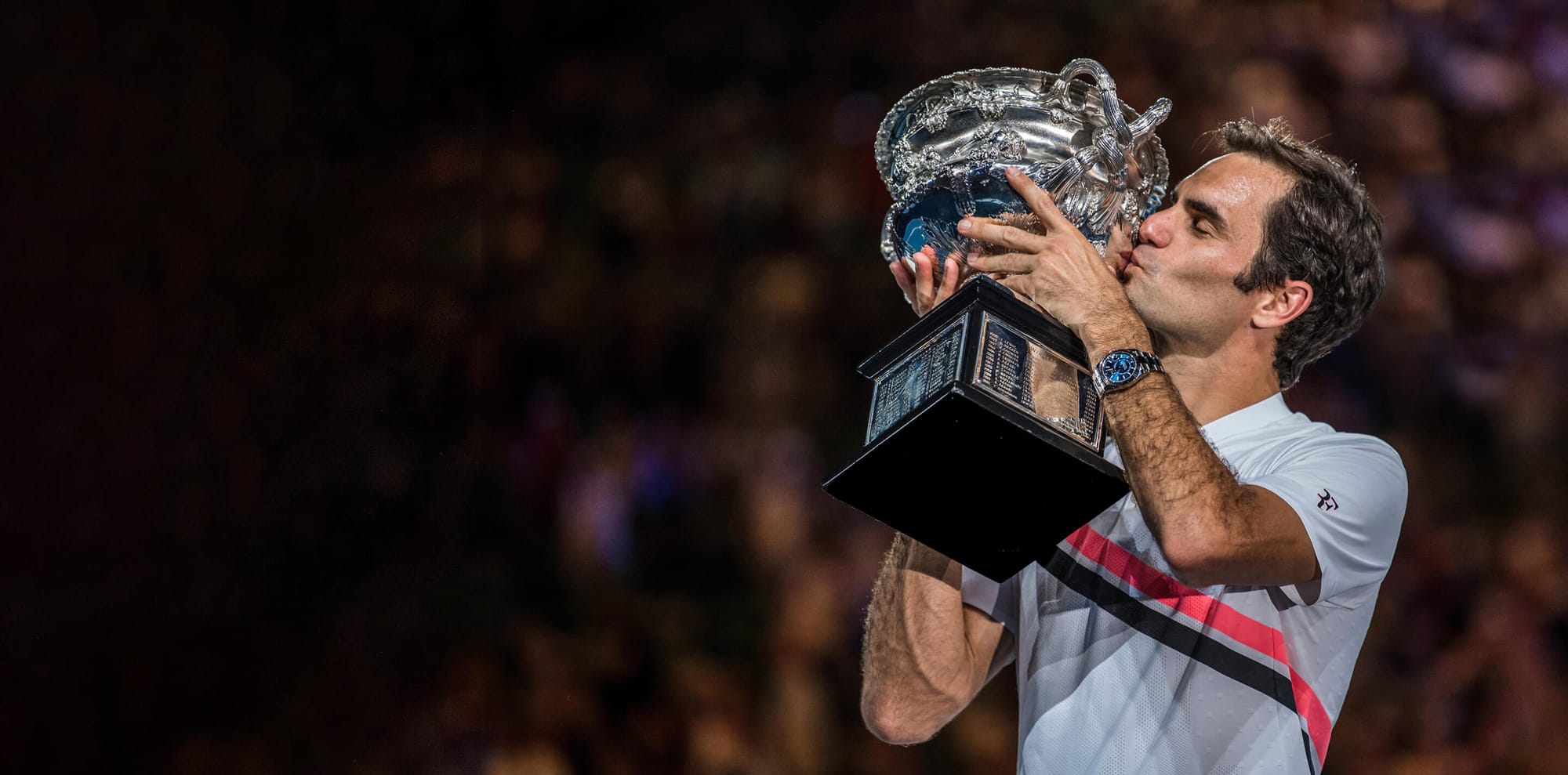
Few athletes in any sport have combined technical mastery, competitive greatness, and personal grace quite like Roger Federer. The Swiss maestro's 20 Grand Slam titles tell only part of his remarkable story.
What made Federer's game so captivating was its artistic quality—his flowing one-handed backhand, balletic footwork, and seemingly effortless power production created a style once described by David Foster Wallace as "kinesthetic beauty". Even casual observers could appreciate the rare combination of precision and creativity in his play.
Beyond his technique, Federer's career offers several inspirational lessons:
Continuous Evolution: Despite early success, Federer never stopped developing his game. When Rafael Nadal's high-bouncing topspin threatened his dominance, Federer eventually switched to a larger racquet head and modified his backhand technique. In his mid-30s, he reinvented aspects of his approach to claim Grand Slams many thought were beyond his reach.
Competitive Longevity: Federer's career spanned more than two decades at the highest level, achieved through meticulous physical preparation, selective scheduling, and an unwavering passion for improvement. His example challenges conventional thinking about athletic primes.
Grace Under Pressure: Whether celebrating victory or processing defeat, Federer maintained remarkable composure and sportsmanship. His gracious post-match speeches, regardless of result, set a standard for dignity in competition.
Perhaps most remarkably, Federer achieved his success without sacrificing joy—his love for tennis remained visible throughout his career, reminding us that sustained excellence and genuine enjoyment need not be mutually exclusive.
What makes Federer remarkable goes beyond his 20 Grand Slam titles. It's the artistry with which he plays—a fluid, seemingly effortless style that masks the incredible technical precision underlying each shot. Rod Laver, himself a tennis legend, noted that Federer "respected the game so much he played his best tennis all the time".
Other Influential Tennis Players
While Federer represents a pinnacle of modern tennis excellence, numerous other champions have left indelible marks on the sport:
Rafael Nadal: The "King of Clay" with an unmatched 14 French Open titles, Nadal's career exemplifies relentless intensity and fighting spirit. His topspin-heavy game revolutionised modern baseline play, while his humility and work ethic have earned universal respect.
Serena Williams revolutionized women's tennis with her power, athleticism, and mental fortitude. Her 23 Grand Slam singles titles speak to her dominance, but her impact extends far beyond statistics. Williams has broken barriers and challenged conventions throughout her career, becoming an advocate for equality in tennis and beyond.
Novak Djokovic: The Serbian star's extraordinary movement, return of serve, and mental toughness have earned him a record number of 24 Grand Slam titles. His dedication to physical preparation and nutritional science has redefined what's possible in terms of athletic performance and longevity.
Martina Navratilova: Beyond her 18 Grand Slam singles titles, Navratilova transformed women's tennis through unprecedented attention to fitness and nutrition. Her serve-and-volley style and left-handed play created a template for aggressive tennis that influenced generations.
Arthur Ashe: Breaking barriers as the first Black man to win Wimbledon, the US Open, and the Australian Open, Ashe combined athletic excellence with humanitarian efforts and social activism that extended far beyond tennis courts.
Billie Jean King: Her 12 Grand Slam singles titles only hint at King's influence. Her victory in the "Battle of the Sexes" match against Bobby Riggs and her founding of the Women's Tennis Association fundamentally changed the landscape of women's professional sports.
Each of these champions found success through different playing styles, personalities, and approaches to the sport—a reminder that there are multiple paths to excellence in tennis.
Lessons Learned from Tennis Greats
The stories of tennis legends offer valuable insights applicable both on and off the court:
Embrace Your Unique Style: The greatest players developed approaches that maximised their natural strengths rather than simply copying others. Andre Agassi's return-focused game differed dramatically from Pete Sampras's serve-and-volley dominance, yet both found tremendous success.
Resilience Through Adversity: Tennis champions repeatedly demonstrate the ability to overcome setbacks. Andy Murray's journey to his first Wimbledon title after four Grand Slam final defeats exemplifies how persistence through disappointment often precedes breakthrough success.
The Importance of Adaptation: As tennis evolved from wooden racquets to today's high-tech equipment, playing styles have continuously evolved. Champions like Steffi Graf showed remarkable adaptability across changing conditions and generations of opponents.
Mental Management: Ivan Lendl pioneered a systematic approach to psychological preparation in tennis, treating mental skills with the same seriousness as forehand technique. Today's champions continue this tradition, with many employing dedicated mental performance consultants.
Finding Balance: While tennis demands extraordinary commitment, the most enduring champions maintain perspective beyond the court. Roger Federer's family focus and Rafael Nadal's fishing escapes in Mallorca illustrate how interests outside tennis support rather than detract from competitive longevity.
Perhaps the most universal lesson from tennis greats is expressed in Federer's insight about talent versus effort: "Yes, talent matters. I'm not going to stand here and tell you it doesn't... Most of the time, it's not about having a gift. It's about having grit". This recognition that determination and hard work ultimately matter more than natural ability is a powerful message for anyone pursuing excellence.
Tennis legends inspire us not just with their athletic achievements but with the character and values they display throughout their careers. Their examples remind us that developing as a tennis player—or in any pursuit—is as much about personal growth as it is about technical skill.
Conclusion
Tennis offers a unique combination of physical challenge, mental engagement, social connection, and lifelong participation opportunities that few other sports can match. From its origins in medieval monasteries to the global phenomenon it is today, tennis has evolved while maintaining its core essence—a beautiful test of skill, strategy, and character.
As you begin your tennis journey, remember that improvement comes through consistent practice, patience, and a willingness to learn. The mental aspects of the game—focus, resilience, emotional control—are just as important as technical skills and physical fitness.
Whether you aspire to compete at a high level or simply enjoy recreational play with friends, tennis offers rewards that extend far beyond the court. The discipline, problem-solving abilities, and mental toughness developed through tennis translate to success in many areas of life.
I encourage you to take that first step—find a local court, pick up a racquet, and experience the joy of hitting a ball cleanly over the net. Connect with other players in your community, take a lesson from a qualified coach, or simply rally with a friend. However you choose to engage with tennis, you're joining a global community united by love for this magnificent sport.
I hope this introduction to tennis has inspired you to pick up a racquet and experience the joy of tennis firsthand. If you require additional assistance or consultation, feel free to reach out.








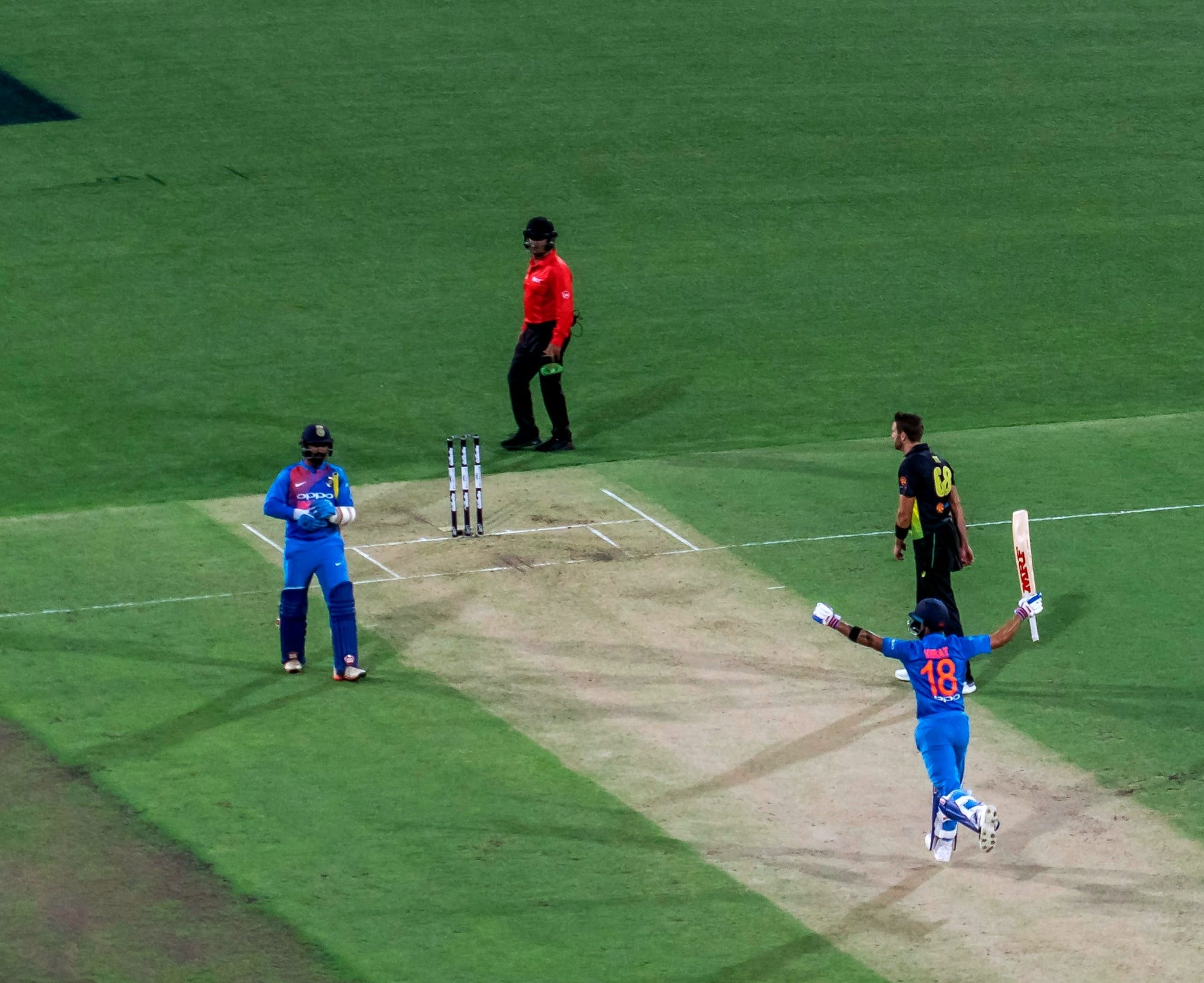




Discussion